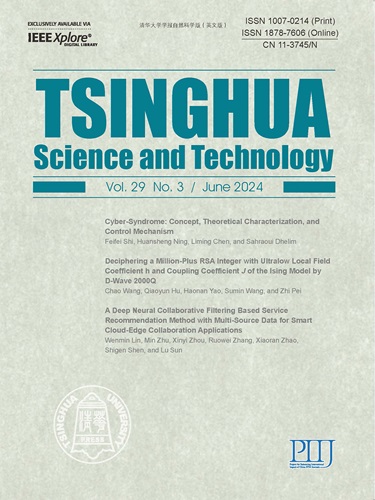LLM4DEU: Fine Tuning Large Language Model for Medical Diagnosis in Outpatient and Emergency Department Visits of Neurosurgery
IF 3.5
1区 计算机科学
Q1 Multidisciplinary
引用次数: 0
Abstract
Clinical diagnosis for complex disease conditions is a complicated decision process involving systematic inference and differentiation. Artificial Intelligence (AI) models have been a widely established approach to help improve the efficiency of various kinds of clinical decision tasks (e.g., diagnosis, treatment, and prognosis). However, due to the critical requirement of time efficiency, lack of sufficient information, and high probability of comorbid diseases in Outpatient and Emergency Settings (OES), it is still challenging to build clinically feasible AI models using the free text clinical records in OES for complex disease conditions, such as neurosurgery. Here we propose an AI diagnosis model, named LLM4DEU, for neurosurgery disease differentiations by fine-tuning a large language model (i.e., ChatGLM) using the Department of Neurosurgery, the Beijing Tiantan Hospital OES electronic health records. LLM4DEU obtained state-of-the-art performance on clinical diagnosis with a F1 score of 78.53%, which is superior to five well-known baselines (including deep learning models). In addition, we evaluated the actual performance of the model by case studies on the diagnosis of specific neurosurgical diseases (e.g., subdural hematoma, cerebral hemorrhage, and cerebral infarction). The experimental results show that the LLM4DEU model has significant advantages in diagnosing low-incidence disease conditions, and comparative analyses with clinical experts confirm the predictive power of the model in neurosurgical diagnosis.LLM4DEU:神经外科门急诊就诊医学诊断的微调大语言模型
复杂疾病的临床诊断是一个复杂的决策过程,涉及系统的推理和辨证。人工智能(AI)模型已经成为一种广泛建立的方法,可以帮助提高各种临床决策任务(例如,诊断、治疗和预后)的效率。然而,由于OES对时间效率的严格要求,缺乏足够的信息,以及合并症的高概率,对于神经外科等复杂疾病,利用OES的自由文本临床记录构建临床可行的AI模型仍然是一个挑战。本文利用北京天坛医院OES电子病历,通过对大型语言模型(即ChatGLM)进行微调,提出了一种神经外科疾病鉴别的人工智能诊断模型LLM4DEU。LLM4DEU在临床诊断方面取得了最先进的表现,F1得分为78.53%,优于五大知名基线(包括深度学习模型)。此外,我们通过对特定神经外科疾病(如硬膜下血肿、脑出血和脑梗死)的诊断案例研究来评估该模型的实际性能。实验结果表明,LLM4DEU模型在诊断低发病率疾病方面具有显著优势,并与临床专家对比分析,证实了该模型在神经外科诊断中的预测能力。
本文章由计算机程序翻译,如有差异,请以英文原文为准。
求助全文
约1分钟内获得全文
求助全文
来源期刊

Tsinghua Science and Technology
COMPUTER SCIENCE, INFORMATION SYSTEMSCOMPU-COMPUTER SCIENCE, SOFTWARE ENGINEERING
CiteScore
10.20
自引率
10.60%
发文量
2340
期刊介绍:
Tsinghua Science and Technology (Tsinghua Sci Technol) started publication in 1996. It is an international academic journal sponsored by Tsinghua University and is published bimonthly. This journal aims at presenting the up-to-date scientific achievements in computer science, electronic engineering, and other IT fields. Contributions all over the world are welcome.
 求助内容:
求助内容: 应助结果提醒方式:
应助结果提醒方式:


